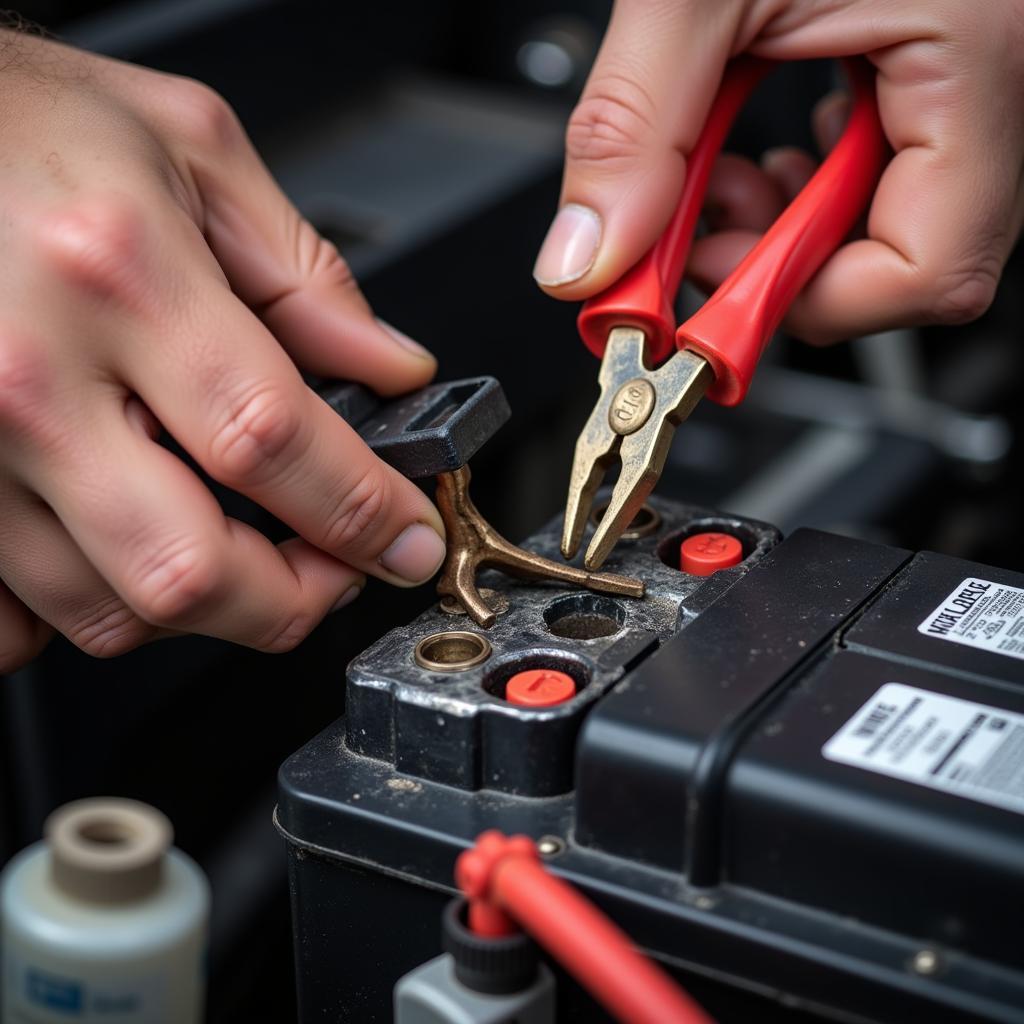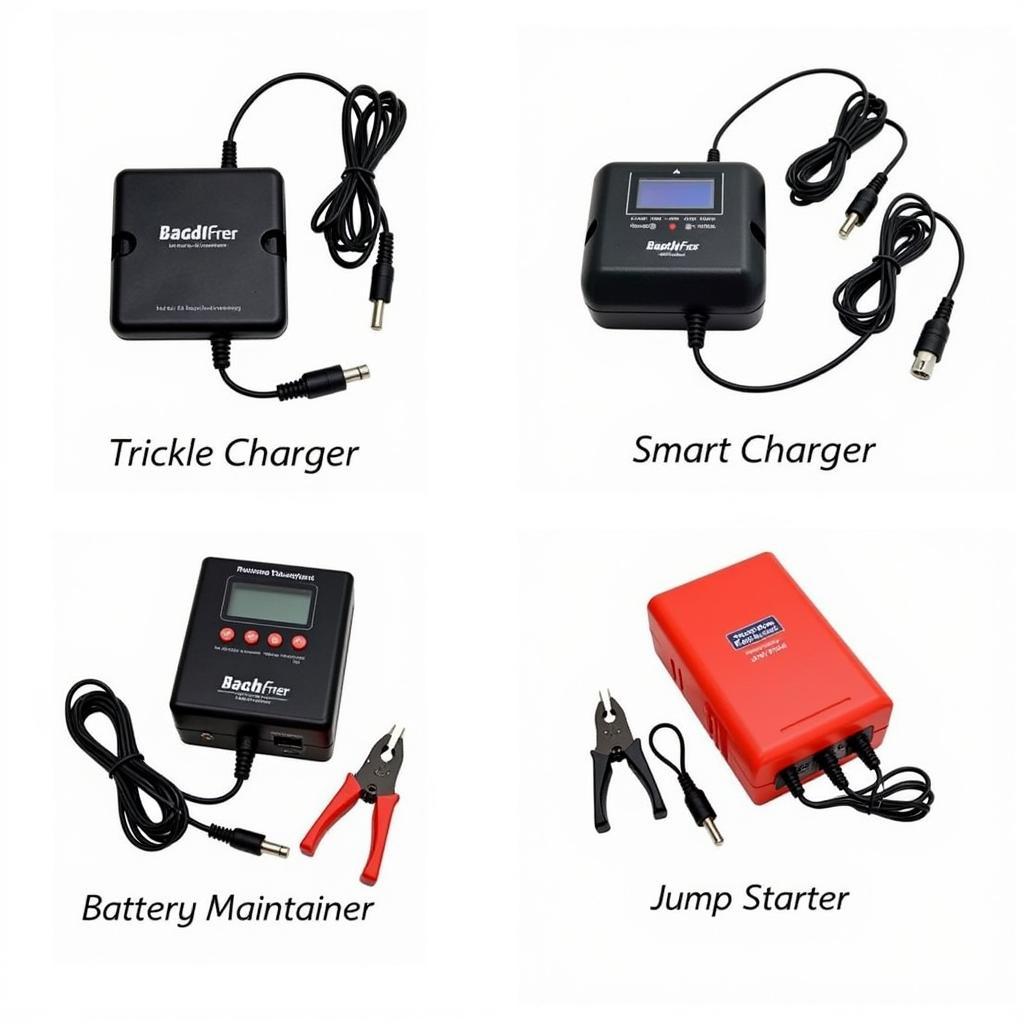A dead car battery is frustrating, especially if it seems to happen randomly. Often, the culprit is a parasitic battery drain, also known as a “battery draw.” This guide will teach you how to check for battery draw and identify the source of the problem so you can get back on the road. Learning this simple process can save you time and money in the long run.
Understanding Battery Draw
Battery draw occurs when a circuit in your vehicle continues to consume power even when the ignition is off. This slow drain can eventually deplete your battery, leaving you stranded. Everything from faulty wiring to interior lights left on can contribute to battery drain. Identifying the specific source requires a systematic approach. Even small draws can add up over time, making it crucial to address them promptly. For example, a car key fob cover that accidentally presses buttons can drain the battery.
Common Causes of Battery Draw
There are several common culprits behind a parasitic draw. These include:
- Interior lights: A dome light that doesn’t turn off completely is a frequent cause.
- Faulty alternator: While the alternator charges the battery while the engine runs, a faulty one can actually drain it when the car is off.
- Aftermarket accessories: Improperly installed stereos, alarms, or other add-ons can draw power continuously.
- Bad relays or fuses: A faulty relay can stay stuck in the “on” position, draining the battery even after the ignition is turned off.
- Glove box or trunk lights: These often get overlooked and can contribute to a slow drain.
 Checking Battery Connections
Checking Battery Connections
How to Check for a Battery Draw
Checking for a battery draw is a relatively straightforward process, but it requires some basic tools and careful attention to detail. Here’s a step-by-step guide:
- Gather your tools: You’ll need a multimeter with a DC amp clamp, safety glasses, and possibly a wiring diagram for your specific vehicle.
- Prepare your vehicle: Turn off all accessories, including interior lights, headlights, and the radio. Close all doors and ensure the ignition is off. A buick key fob battery drain can be a cause so ensure it is not faulty.
- Disconnect the negative battery cable: This is crucial for safety and accurate readings.
- Connect the multimeter: Attach the positive lead of the multimeter to the negative battery terminal and the negative lead to the disconnected negative battery cable.
- Observe the reading: The multimeter will display the current draw in amps. A reading of more than 50 milliamps (0.05 amps) generally indicates a significant parasitic draw that needs investigation. Remember, if your car battery very dead it might be a sign of a significant draw.
Identifying the Source of the Draw
Once you’ve confirmed a significant draw, the next step is to pinpoint the culprit.
- Check the fuses: Remove each fuse one at a time while observing the multimeter reading. A drop in the reading when a specific fuse is removed indicates the circuit that fuse protects is the source of the draw.
- Inspect relays: Relays can also be tested by removing them one by one.
- Consult a wiring diagram: If you have access to a wiring diagram for your vehicle, it can help you trace the problematic circuit more easily.
- Seek professional help: If you’re uncomfortable working with electrical systems or can’t identify the source of the draw, it’s best to consult a qualified automotive technician. This is especially important if you are experiencing a range rover low battery warning or a land rover discovery 4 low battery warning.
“A systematic approach to checking for battery draw is key,” says John Smith, Senior Automotive Electrical Engineer. “Don’t just start pulling fuses randomly. Follow the steps and be methodical.”
Conclusion
Knowing how to check for battery draw is an essential skill for any car owner. By understanding the process and utilizing the right tools, you can prevent frustrating dead battery situations and potentially save yourself a costly repair. Remember to be systematic and, if in doubt, seek professional assistance. Addressing a battery draw promptly will ensure your vehicle remains reliably powered and ready for the road ahead.
FAQ
- What is a normal battery draw? A normal battery draw should be less than 50 milliamps (0.05 amps).
- Can a bad battery cause a battery draw? No, a bad battery doesn’t cause a battery draw, but a battery draw can drain and damage a good battery.
- Do I need to disconnect the battery to check for a draw? Yes, disconnecting the negative battery cable is essential for safety and accurate readings.
- What tools do I need to check for a battery draw? You’ll need a multimeter with a DC amp clamp.
- What should I do if I can’t find the source of the draw? Consult a qualified automotive technician.
- How often should I check for battery draw? It’s a good idea to check periodically, especially if you notice your battery draining faster than usual.
- Can leaving interior lights on cause a battery draw? Yes, even small interior lights can drain your battery over time if left on.


